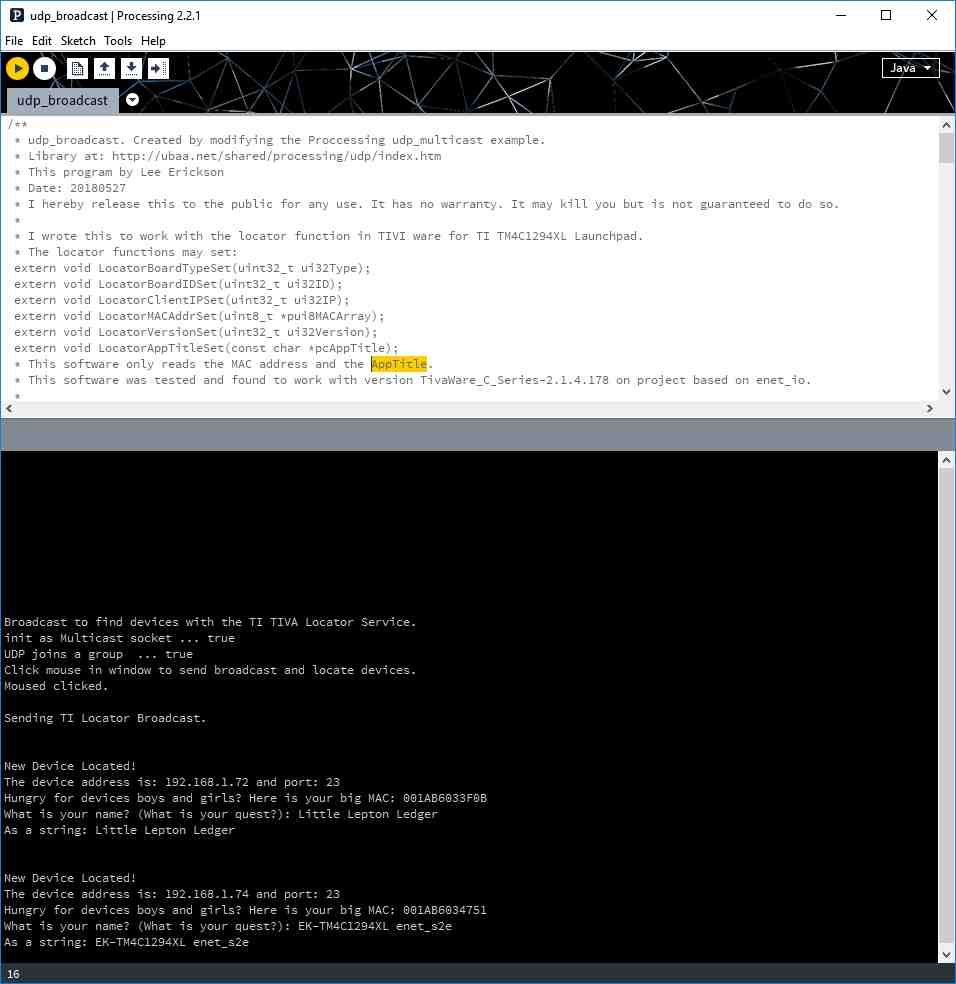Tool/software: Code Composer Studio
I am becoming familiar with the EK-TM4C1294 ethernet interface by reading code in the example: enet_io.
Anticipating that I will need a way to find my device on a network, I see the possible solution with "A device locator server using UDP in lwIP" in the file locator.c / locator.h files.
Searching the project it does not appear that this code is used much. For example "Set A Device Application Title" is never called to set the string with a title (that I can see.)
Also is there a software for windows that would find devices announcing their pretense in the network using this locator?
I would assume something like arp -a but which returns not only the IP address, MAC but also the rest of the fields in the locator.
Thanks,
(Forrest) Lee Erickson


